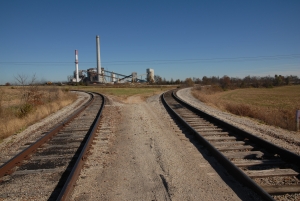Australia’s infrastructure woes are nothing new – we are constantly bombarded with media reports of rail breakdowns or delays and traffic jams. But is our infrastructure really as bad as it is portrayed?
According to Brad Vann, partner at Clayton Utz, considering Australia’s large geographical spread, overall, our infrastructure isn’t bad.
However, Vann said: "There is a priority paper which Infrastructure Australia has published which shows that almost $100 billion of priority development… [businesses] talk about an infrastructure deficit of something like $400 to $700 billion dollars."
Natural disasters have also added to the problem, with the Queensland floods requiring billions in rebuilding assets and cyclone Yasi destroying key infrastructure.
"We are [also] facing an unprecedented growth in population as we move to provide a skilled labour demanded by ongoing economic growth," Brendan Lyon, chief executive at Infrastructure Partnerships Australia, said.
"That provides significant demand pressures across transport, utilities and social infrastructure networks like education and health. Failure to invest at a most basic level will mean lower productivity, prosperity and quality of life."
In December 2008, Infrastructure Australia released a report on how to improve Australia’s existing infrastructure. It listed seven key challenges, including: delivering better governance; creating competitive markets; uniform national rules and legislation; making better use of existing infrastructure; climate change; boosting exports; and supporting indigenous and rural communities.
With a carbon tax looming, climate change will be one of the key challenges moving forward.
"What government needs to do in terms of climate change mitigation is to clearly articulate a consensus position on greenhouse gas emission reduction targets and mechanisms, including the price on carbon," Lyon said.
"Industry and the community need to know what the rules of the game are going to be so they can make the adjustments to existing assets and plan new investments in areas like transport and energy generation."
Blame for Australia’s current infrastructure problems are commonly pointed to a lack of government spending on a federal and state level.
"Governments have a lot of different spending priorities, so they might delay spending some money on investment in infrastructure or the refurbishment of infrastructure because they can afford to. That doesn’t mean the infrastructure won’t be there – it just means it will start to decay," Vann said.
It’s only when infrastructure becomes unusable or user numbers dramatically increase, with public transport trips doubling in the past 10 years in Melbourne, according to Vann, that the government starts to pay attention.
Government attention is often prompted by public transport inefficiencies. However, infrastructure can be broken down into several different other sectors – road, rail, freight, ports, water and electricity – each with their own priorities.
"Whilst I think public transport is probably the most pressing priority in terms of improving the quality of the asset base, there is a looming priority in respect of the way our roads work because most of the freight task is done on roads," Vann said.
Moving ahead, improving Australia’s infrastructure will be a challenge, both for the public and private sector. Vann said the main challenge will be the government finding funds for projects.
"What we need to do is try and think about ways in which we can better access private sector capital to assist in that investment profile," Vann said.
There are also ways the industry can help, including coming up with ideas on how to improve infrastructure and put those ideas before government, according to Vann.
Vann said in the next two to five years, infrastructure will not be severely impacted if it isn’t improved. However, the next five to 10 years will see severe problems with our infrastructure, particularly if current population trends stay on track.
"We will really notice that we have substandard infrastructure," he said.
"Where we sit now currently, we’ve got a challenge in front of us."













